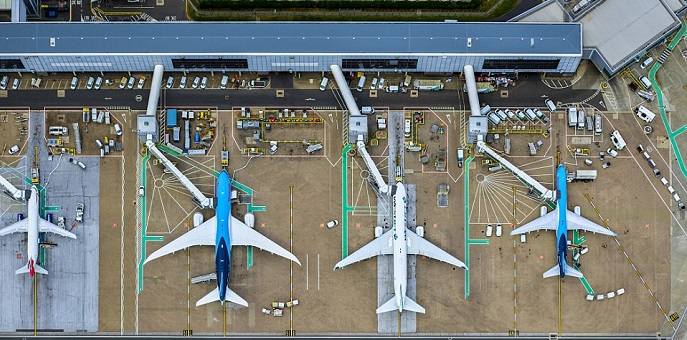OTAR Considerations Related to Aviation Maintenance Facilities Requirements – Reference Overseas Territory Aviation Requirements OTAR Part 145.103 & OTAC 145-1
OTAR Base Maintenance Requirements
103.1 Base Maintenance
For base maintenance of aircraft, hangars should be both available and large enough to accommodate aircraft on planned base maintenance.
Where the hangar is not owned by the organisation, it may be necessary to establish proof of tenancy.
In addition, the sufficiency of hangar space to carry out planned base maintenance should be demonstrated by the preparation of a projected aircraft hangar visit plan relative to the aircraft maintenance programme.
The aircraft hangar visit plan should be updated on a regular basis.
For aircraft component maintenance, this means that aircraft component workshops should be large enough to accommodate the components on planned maintenance.
OTAR Line Maintenance Requirements
103.2 Line Maintenance
For line maintenance of aircraft, hangars are not essential, but it is recommended that access to hangar accommodation can be demonstrated for usage during inclement weather for minor scheduled work and lengthy defect rectification.
However, in all cases the nature of the maintenance task should be considered and if required appropriate accommodation should be made available.
OTAR Office Accommodation Requirements
103.3 Office Accommodation
Appropriate office accommodation should be provided for the incumbents, whether they are management, planning, technical records, quality or certifying staff, such that they are able to carry out their designated tasks in a manner that contributes to good aircraft maintenance standards.
In addition, aircraft maintenance staff should be provided with an area where they may study maintenance instructions and complete maintenance records in a proper manner.
OTAR Environmental Considerations
103.4 Environmental Protection
(a) Protection from the weather elements relates to the normal prevailing local weather elements that are expected throughout any twelve month period.
Aircraft hangar and aircraft component workshop structures should be to a standard that prevents the ingress of rain, hail, ice, snow, wind and dust etc.
Aircraft hangar and aircraft component workshop floors should be sealed to minimise dust generation.
(b) Hangars used to house aircraft together with office accommodation should be such as to ensure the working environment permits personnel to carry out work tasks in an effective manner.
(c) Temperatures should be maintained such that personnel can carry out required tasks without undue discomfort.
(d) Dust and any other airborne contamination should be kept to a minimum and not be permitted to reach a level in the work task area where visible aircraft/component surface contamination is evident.
(e) Lighting should be such as to ensure each inspection and maintenance task can be carried out.
(f) Noise levels should not be permitted to rise to the point of distracting personnel from carrying out inspection tasks. Where it is impractical to control the noise source, such personnel should be provided with the necessary personal equipment to stop excessive noise causing distraction during inspection tasks.
(g) Where a particular maintenance task requires the application of specific environmental conditions different to the foregoing, then such conditions should be observed.
Specific conditions are normally identified in the approved maintenance instructions.
(h) The working environment for line maintenance should be such that the particular maintenance or inspection task can be carried out without undue distraction.
It, therefore, follows that where the working environment deteriorates to an unacceptable level in respect of temperature, moisture, hail, ice, snow, wind, light, dust/other airborne contamination, the particular maintenance or inspection tasks should be suspended until satisfactory conditions are re-established.
(i) For both base and line maintenance where dust/other airborne contamination results in visible surface contamination, all susceptible systems should be sealed until acceptable conditions are re-established.
OTAR Stores & Logistics
103.5 Storage and Segregation
(a) Storage facilities for serviceable aircraft components should be clean, well-ventilated and maintained at an even dry temperature to minimise the effects of condensation.
Manufacturers’ storage recommendations should be followed for those aircraft components identified in such published recommendations.
(b) Storage racks should be strong enough to hold aircraft components and provide sufficient support for large aircraft components such that the component is not distorted during storage.
(c) All aircraft components, wherever practicable, should remain packaged in protective material to minimise damage and corrosion during storage.
(d) Appropriate measures should be taken to segregate the storage of components where the likelihood of cross-contamination of physical and or electro/magnetic influence may occur.
Sofema Aviation Services www.sassofia.com and Sofema Online www.sassofia.com provide regulatory training compliant with EASA, FAA & OTAR requirements. For details please email office@sassofia.com or online@sassofia.com




